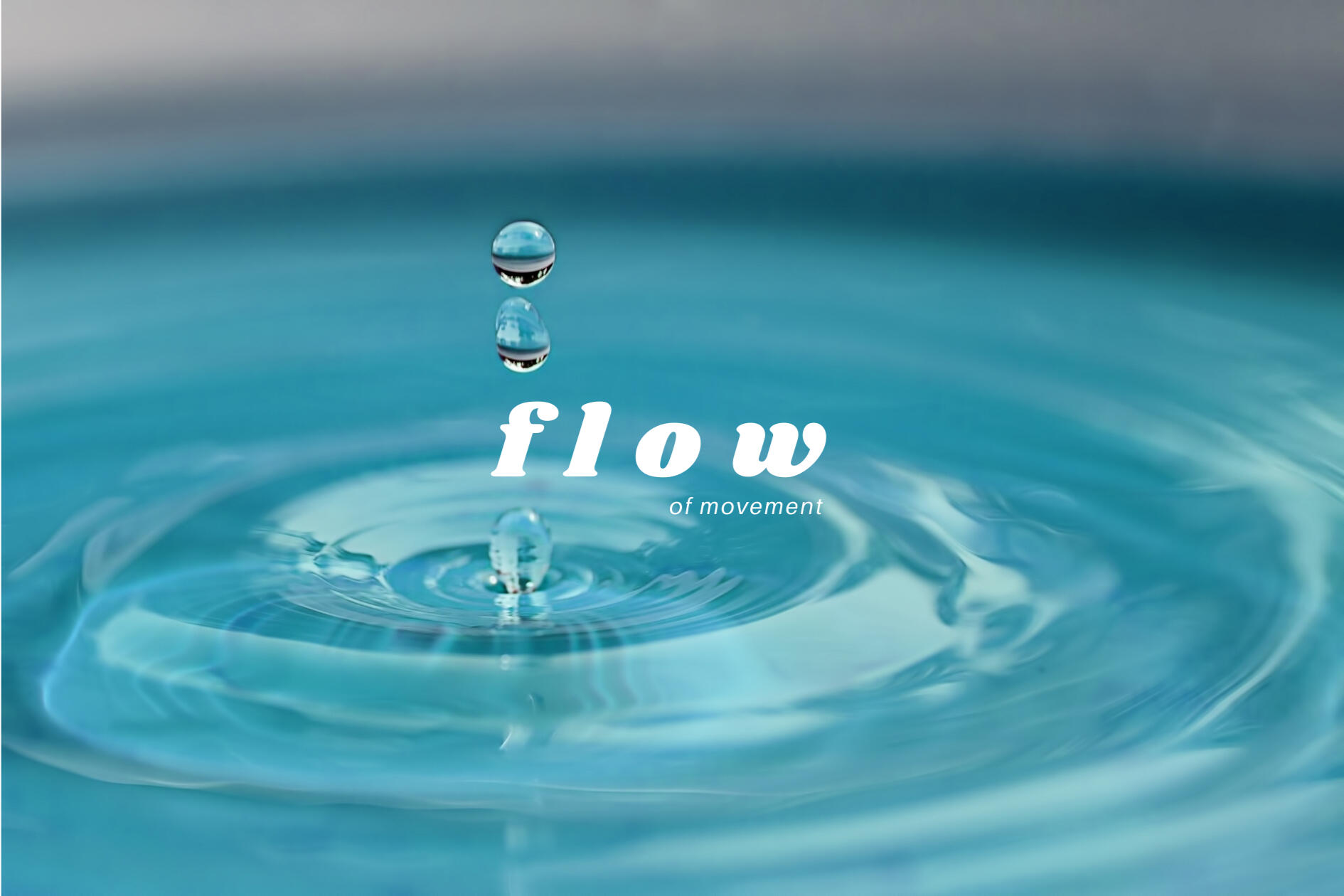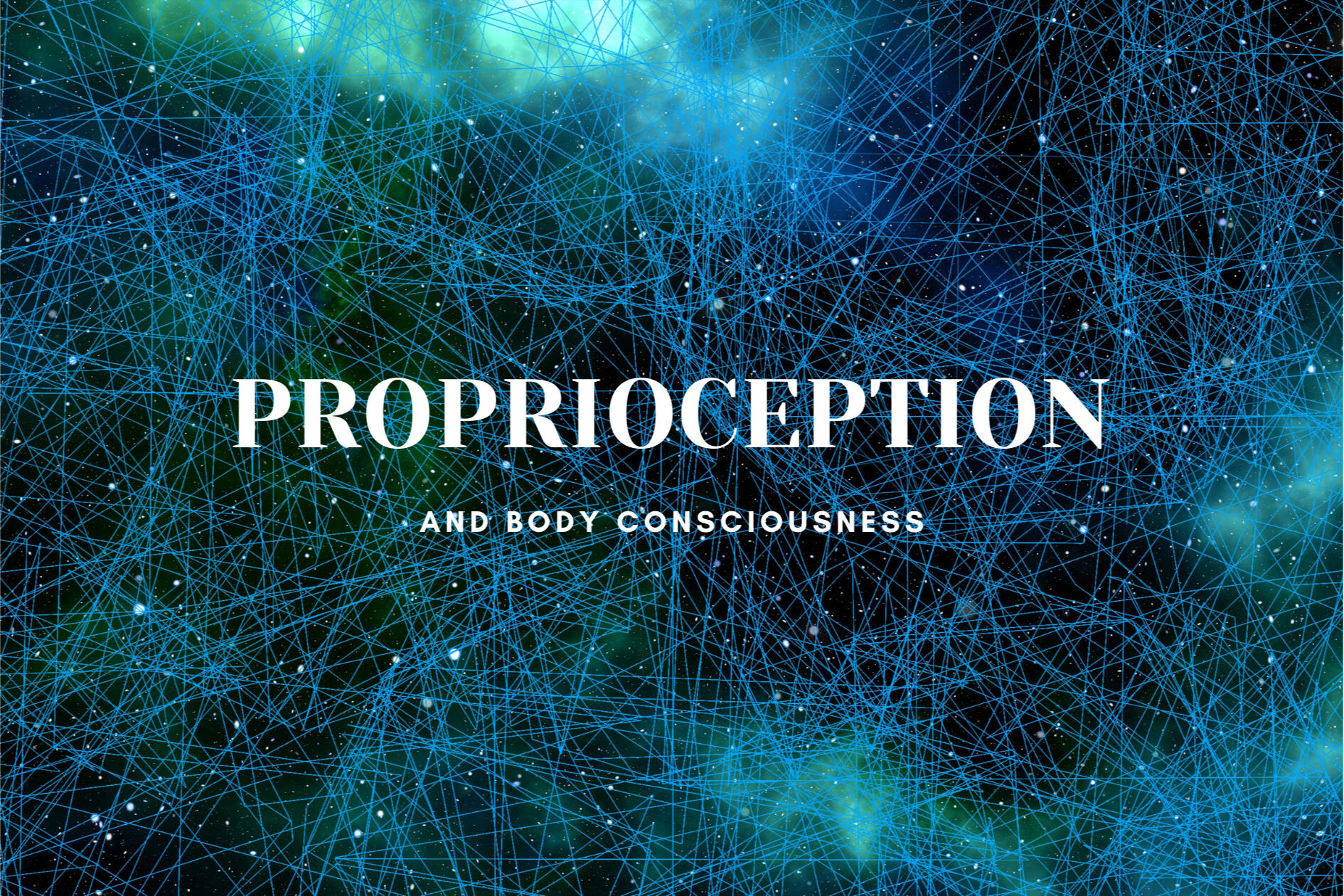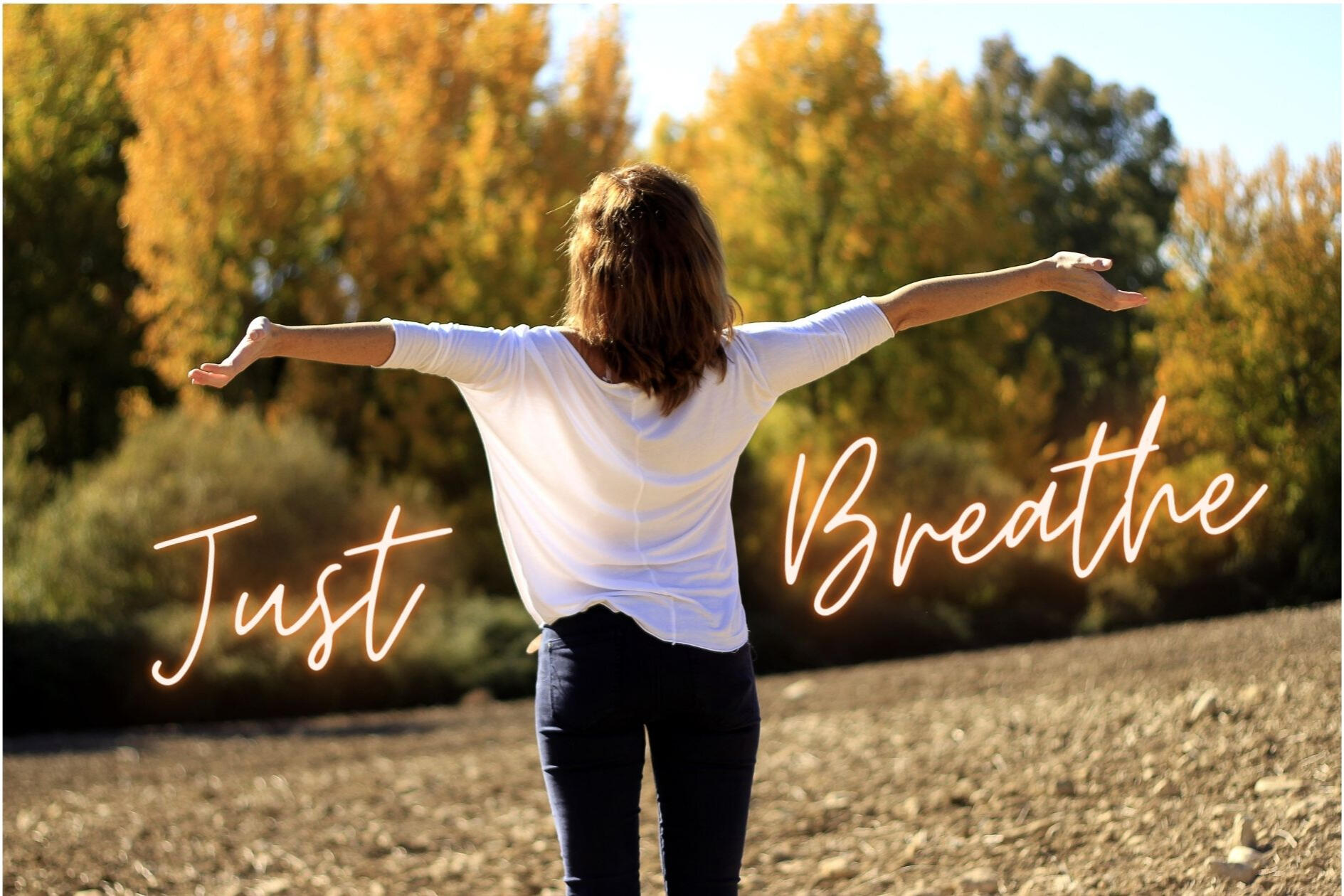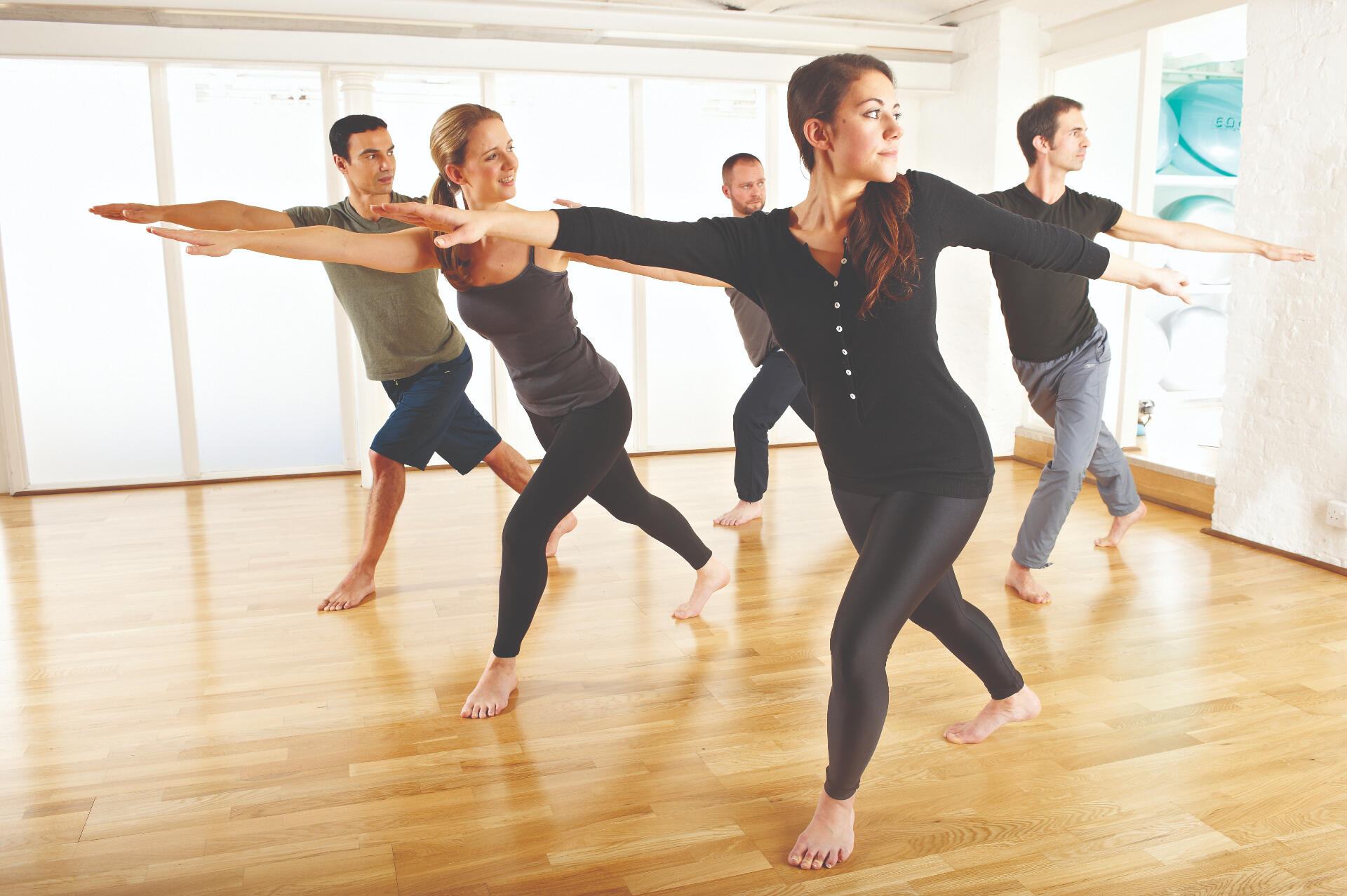(0) 7403 404 673 | pilates@artqinature.com
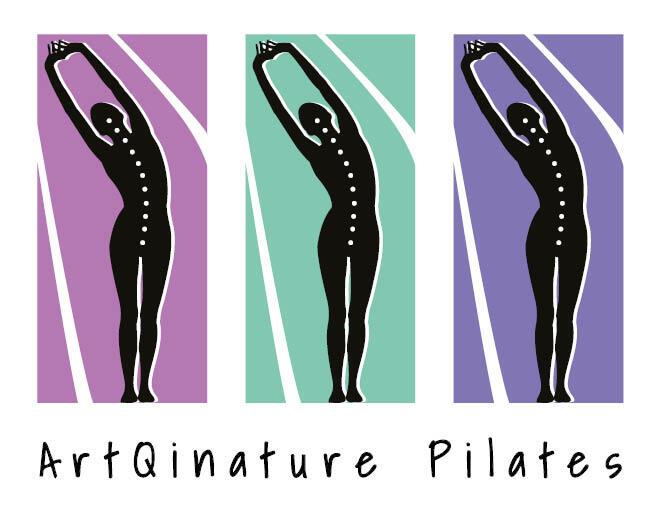
Pilates for Wellbeing
Welcome to ArtQinature Pilates
I specialise in Back Pain, Hypermobility, and Pre & Postnatal Pilates, helping you move with confidence, strength, and ease.
Would you like to improve your posture, reduce stress, and feel more connected to your body? Through mindful movement, I’ll guide you towards a stronger, more balanced body and a calmer, more focused mind.You’re already one step closer to better health and deeper mind-body awareness. Congratulations and welcome to your journey of
wellbeing!
Group Classes Timetable
"Everyone is the architect of their own happiness"
Joseph Pilates
About Me
The teacher
I’m Laura, a former architect turned Pilates teacher. My Pilates journey began in 2015 when I was advised to try it after struggling with persistent neck pain from my work in architecture. Pilates not only relieved my physical pain but also brought me peace and improved my mental health. After practising regularly for a few years, I decided to share the benefits I had experienced with others. I traded buildings for human bodies and became a certified Pilates teacher through Body Control Pilates®. This was just the beginning of my passion for physiology and the power of movement.I use Pilates as a tool to promote body awareness and overall wellbeing and I specialise in Lower Back Pain, Hypermobility, and Pre/Postnatal Pilates.I’m fascinated by the mind-body connection and incorporate elements from various movement disciplines into my sessions. I have a special interest in breathing and the role of fascia in movement, as well as their impact on our health.Being familiar with office environments allows me to understand the challenges faced by my desk-bound clients and help them relieve stiffness and improve posture.When I’m not teaching or learning, I enjoy spending time in nature, visiting exhibitions, attending performances, and discovering new places. But I’m also happiest relaxing at home, reading, gardening.. and spending time with my family and my cat.
Locations
The venues
LOCATION 1 | WEDNESDAYS Group Matwork Classes
At the beautiful Wollstonecraft room of the emblematic Newington Green Meeting House, 39a Church Walk, Newington Green, London N16 9PR; a newly refurbished venue with a revolutionary history and...a piano!
LOCATION 2 | MONDAYS Group Matwork Classes
At the light-filled Performance Hall of Newington Green Primary School, Auriga Mews, London N1 4ND; A spacious room with large windows and high ceilings and....another piano!
LOCATION 3 | TUESDAYS Postnatal Classes
At the vibrant Hackney Showroom, 4 Murrain Road, Kings Crescent Estate, N4 2BN; A nice space dedicated to community activities by Clissold Park, with walls filled with children's books.
LOCATION 4 | Private Reformer Sessions
At the lovely Abuelita's Wellbeing Studio, 17 Amhurst Terrace, Lower Clapton, London E8 2BT; a hidden gem located inside Hackney Downs Studios designed to make you feel at home.
2023 © ArtQinature Pilates | (0)7403 404 673 | pilates@artqinature.com
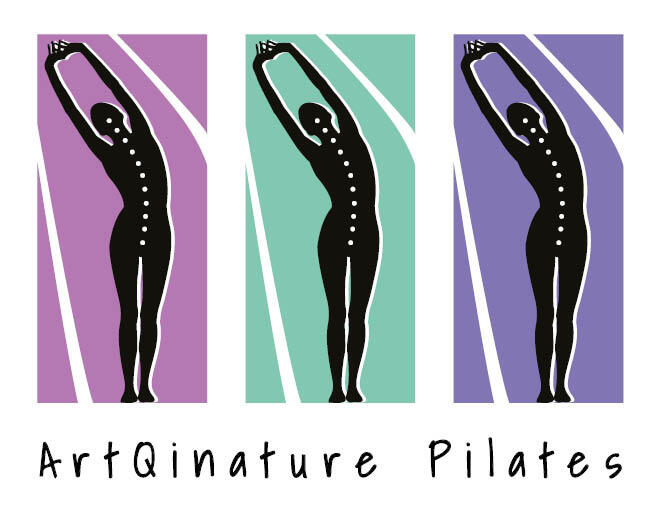
2023 © ArtQinature Pilates | (0)7403 404 673 | pilates@artqinature.com
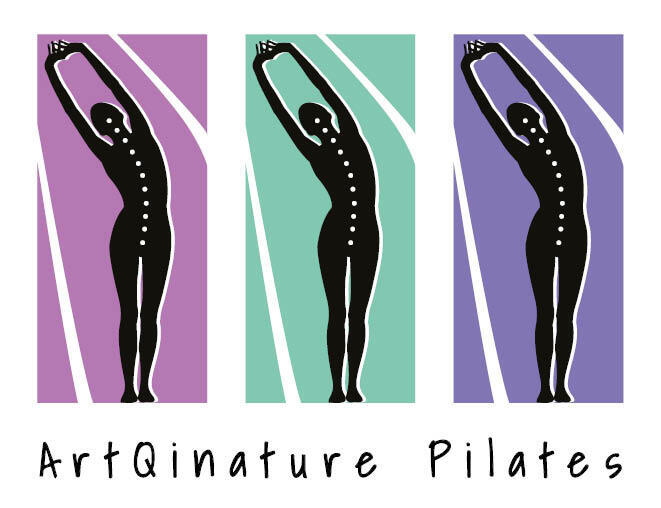
M
2023 © ArtQinature Pilates | (0)7403 404 673 | pilates@artqinature.com

Blog
The principle of Flow
April 2021
Flow is another principle of Pilates. Flowing movement feels natural, enjoyable, and pleasant. During a state of flow, the whole body is sensitive, present, and actively engaged.
The body is a holistic dynamic system, where the mobile parts that form it, as well as the parts which assist with its movement, act together in a constant coordinated manner. Flowing movement sets free the constrictions of the body. Restrictions of movement produce rigidity in the body in general, chronic contractions, contractures, shortening and stiffening of the muscles, resulting in pain, and impeding movement.
The rigid body needs to let go to unblock and undo all that muscle stiffness and start moving in a free natural way, using its full range of movement as much as possible. The different parts of the body need to be free and independent as well to act together coordinated as part of the same system to achieve flow.
" Flowing movement sets free the constrictions of the body."
However, achieving flow in the whole body can be sometimes a long working process. That is because our rigidity starts to be present during our childhood and develops progressively, making our muscles lose their natural tone and flexibility, performing incomplete, inefficient, or even harmful movements. The physical problems that appear as a result, such as poor circulation, loss of sensitivity and control of movement etc are mostly a consequence of the initial rigidity.We also need to consider that when purposely applying flow to our movement, some parts of the body can be consciously maintained still or stable while others are mobilized to achieve specific objectives. These may be:Firstly, achieving the dissociation of each body part and joint in relation to the rest of the body, therefore adjusting the ideal tone of each part independently and at the same time the coordination between all the parts.Secondly, through the first objective, lengthening and liberating the rigid area releasing unnecessary tension progressively to improve the circulation, the sensitivity, and the control on that area, providing it with more oxygen. This facilitates the control of its movement to then achieve the state of flow efficiently.Thirdly, with the intention of preventing, treating, and correcting postural problems, poor joint alignment, or shortening of the muscles that suffer stiffness, tension, and deviations, which can develop injuries.
" When purposely applying flow to our movement, some parts of the body can be consciously maintained still or stable while others are mobilized to achieve specific objectives."
Flow in Pilates also refers to the need to perform the exercises with a smooth and conscious continuity, with uninterrupted movements, and without sudden changes that could result in injuries.
Each body has its own rhythm which needs to be respected. But also, some exercises might need a faster pace whereas others are better performed at a slower pace. In both cases, achieving flow of movement will maximize the effectiveness of the Pilates method.Once the exercises are mastered the attention can be brought to the transition between one exercise and the next to create a general flow of the whole Pilates session. Transitions should be soft and natural, so that the end of an exercise blends nicely with the beginning of the following, aiming to ‘join’ them through a single movement. Eventually, the objective of a Pilates class is to create a connected sequence of movements, with no pause of movement between the exercises, that allows you to experience flow from the beginning until the end of class.
" The objective of a Pilates class is to create a connected sequence of movements, with no pause of movement between the exercises, that allows you to experience flow from the beginning until the end of class."
The principle of Alignment
February 2021
In our last post we talked about our centre and how our movement originates from it. But, to generate and distribute the muscle power and the energy from the centre to the rest of the body we need to apply correctly the principles of breathing and alignment.We explained the importance of breathing in our very first post and its close link to the centre or powerhouse through the function of the diaphragm. We are now going to focus on the principle of alignment and the word that you probably hear more often in a Pilates class (along pelvis and spine), ‘neutral’.The principle of alignment will help us to become conscious of how to position our body and avoid potential injuries. The key reference points of our body to maintained correctly aligned during all our postures and movements in our daily lives are:
We often adopt postures in which our joints suffer too much pressure. The principle of alignment allows us to correct and lengthen out body, decompressing the joints of our legs, arms and spine. Additionally, good alignment promotes the correct activation of the muscles that hold our posture and ensures the best performance of the the muscles crossing our joints.Neutral posture involves the correct positioning of our back (spine), our pelvis, and our shoulder blades; besides placing our arms by the sides of the body, maintaining shoulder width, and our legs parallel and hip width distance. In this post we will focus primarily on the alignment of the spine.The alignment of our spine is essential for our body to work properly. It is designed to resist high levels of pressure and effort, but this can also be the trigger of early degeneration of the joints, bones and muscles. One of the main aims of Pilates is to restore and maintain the natural movement of the spine. To achieve this, we focus on placing the spine and the pelvis in what is known as ‘neutral’.
"Good alignment promotes the correct activation of the muscles that hold our posture and ensures the best performance of the the muscles crossing our joints."
What is neutral?The spine is formed by five natural curves which need to be respected in neutral alignment: cervical spine, thoracic spine, lumbar spine, sacrum and coccyx. These curves act as a cushion, absorbing the stress and the efforts caused on the spine and supporting its movement as well as our balance.When we place our pelvis in neutral the three lowest parts of the spine (lumbar spine, sacrum and coccyx) are also placed in neutral, maintaining their natural curves. When we lay down on the floor, placing the spine in neutral, our lower back is neither resting on the floor flattening its curve or overarched increasing its natural curve. The muscles of the back are relaxed and we can feel our sacrum grounded on the floor.The lateral breathing promoted in Pilates helps to maintain the neutral posture of the pelvis and the lumbar spine, activating our deep abdominals and pelvic floor which sustain the correct posture of this area.
"The alignment of our spine is essential for our body to work properly."
The mid spine or thoracic spine forms our ribcage along with the ribs and the sternum. Through breathing we mobilise the lateral and posterior parts of the ribcage (which is an area that most of the people do not move and therefore tends to become rigid). This helps to soften and improve the flexibility of the kyphotic curve or mid spine.Also, as mentioned earlier, the lateral breathing activates our deep stabiliser muscles, which helps to maintain the neutral posture of the thoracic spine during the continuous movements that this area experiences during inhaling and exhaling.
"When other parts of the spine are not in neutral this will have a direct effect on the neck, affecting its neutral position."
Our neck and our cervical spine also need to maintain their natural lordotic curve, free of pressure. When we lay down on a supine position with our neck in neutral, our eyes and chin are pointing upwards and, in the same way as it happens with the lumbar spine, the cervical spine does not rest on the floor.
Our head and neck will react to most of the movements of our back. When other parts of the spine are not in neutral this will have a direct effect on the neck, affecting its neutral position.The shoulder blades or scapulas are the two flat bones positioned at the back of our ribcage.Their movement is related to the movement of the arms. In Pilates is very important to be conscious of the posture or the movement that the shoulder blade needs to perform as we move the arms or the rest of the body. The work of the shoulder blades is so important that is known as ‘second powerhouse’ and we will dedicate another post to look at this area more in detail.
"The work of the shoulder blades is so important that is known as ‘second powerhouse’."
Our Core, Center or Powerhouse
February 2021
Every exercise in Pilates starts from breathing. During our inhalation and exhalation, we involve very important muscles of the central part of the body. These are involved in maintaining our posture and providing stability to our movement. These muscles are part of what we call in Pilates our center, core or powerhouse.The concept of working out the core or the center is also very extended in physiotherapy and in the wider context of the world of fitness, health, and prevention and rehabilitation of sport injuries. It is used for the preparation as well as for the optimization of the sports performance.
The correct use of our center in Pilates allow us to expand and make more flexible our torso besides providing the necessary stability and balance to the center of our body so that we can perform any movement efficiently.
Through breathing, we activate the muscles of our center and transmit the strength to our legs and arms by stabilising our torso and improving the movement of the joints. Our powerhouse optimizes our muscle energy, movements are more efficient with less effort and the risk of injury decreases.
"Our powerhouse optimizes our muscle energy, movements are more efficient with less effort and the risk of injury decreases."
So what’s exactly the core?The core is located in the center of gravity of our body, our center of balance and energy from which movements arise. His correct functioning is based on the right balance between length and strength of the muscles which control the speed and stabilization of the movements.
The core muscles help to generate the sufficient strength in the center of the body to then transmit it to the limbs during the movement. They are also necessary to hold bones, joints and the discs of the spine, allowing us to bear loads higher than our body weight and perform resistance exercises.The main core muscles are transversus, diaphragm, multifidus and pelvic floor along others such as the intercostals and the obliques.
Why and for what do we use our core?Joseph Pilates called our center the 'powerhouse', where all movement should begin. Applying the concept of ‘centring’ is necessary for the prevention of injures. Considering that most of our daily activities, exercises and sports are movements that required strength as well as balance in our torso, any alteration of the core muscles will lead to a poor technique likely resulting in injuries. One of the best examples is the lower back pain which results from sports that require a repetitive change in direction.Sometimes failures in our neuromuscular subsystem, which is on charge of adjusting our body to sudden changes, or even our emotions, such as stress and anxiety, can alter the functioning of the core muscles preventing it from working properly.
It is widely recognized that implementing an efficient functionality of the core muscles, with an earlier activation, will improve the sport performance. Several studies have stated that a lack of strengthening and resistance on the stabiliser muscles of the torso and the pelvis are associated with muscle and joints injuries of the spine and lower limbs.Therefore, if we are able to stabilise, re-educate and strengthen our core we will prevent injuries or improve the rehabilitation process from those already caused, in the context of both, on our daily lives and at sport level.
So next time you hear during a Pilates class the famous sentences of 'increase your centring' or 'activate your core' you will understand the importance behind it and you will be surprised of the improvement in the quality of your movement after learning to use your center effectively.
"Joseph Pilates called our center the 'powerhouse', where all movement should begin."
Proprioception and Body Consciouness
January 2021
Proprioception is the perception or awareness of the position and movement of the body. Body consciousness is the capacity of listening and understanding our bodies.When practising a sport, you might have been asked sometimes to focus on the feeling on a specific part of your body. This might sound strange, but actually, mind and body are connected. Mind governs and leads the body and the state of our body also affects the mind.
Being ‘conscious’ of your body means being aware of your physical possibilities, respecting your body and moving it correctly using its full potential. For that it is necessary to know your body, its limitations, your sensations and mindfully perceive how it feels on each posture, even when performing an activity.
Each body reacts in a unique way to different conditions and situations. To improve our movements and prevent posture problems it is important that we can understand how it behaves and how we can control its performance.
"Body conciousness is the capacity of listening and understanding our bodies."
Each of us have a mental idea, sometimes mistaken, about how our body physically is. We have mapped that our in our memory and through our movement experiences and feelings. The more realistic this ‘model’ is the more we will understand its structure, its nature, and the mechanics behind it and the easiest it will be for us to achieve a controlled movement, efficient and natural.We have often wrong ideas about our bones or muscles when moving. If for example, you believe that one part of your body is not mobile we will not identify its rigidity as dysfunctional. Therefore, we will not try to move it to recuperate its mobility. To compensate the lack of movement on this area, we will use, instead, other unnecessary movements in excess.
If we correct our movements, experimenting with postural changes and new ways of moving ‘correctly’ focusing on our body, time and practice will turn these into habits which will become spontaneously part of our posture and usual way of moving.The relaxation or contraction of our muscles, our movements, sensations, and our posture are controlled voluntarily and consciously by our nervous system. The possibility of performing an specific movement or differentiate individual feelings is subject to how tuned is the connection between our brain and the muscles involved.
This connection can be reinforced through the practice of exercises to increase the sensitiveness and efficiency of the movements. By consciously training our muscles we will improve their capacity to activate and work efficiently and therefore the consciousness to perceive the state of our body.
"By consciously training our muscles we will improve their capacity to activate and work efficiently and therefore the consciousness to perceive the state of our body."
Our body consciousness and our healthBeing conscious of your body allows you to feel what happens in it and perceive the signs it transmits. Trough small gests or light changes on your habits you will be able to give it what it needs and omit what damages it to satisfy its needs in a healthy, natural, and balanced way.Our difficulty to relax causes poor postures and common pains that we have got used to: neck tension (and associated headaches), upper or lower back pain, tendinitis, bruxism… among others.
Bad postures such as sitting slouched or curved forward, being in front of the computer with the shoulders hunched forward or driving with excessive tension are some of the everyday examples that can damage our health. We can perform the same activities in a more released way without the wearing that occurs when we maintain tension for a prolonged time. Once we get used to perceive our bad habits, we are then able to change them little by little.Being conscious of your movement, of your sensations, will make you feel better in a short time, but you will also be improving your quality of life in a medium to long term. You will feel better.
If you are conscious of how you breath, if you adopt natural postures and if you listen to your body and avoid doing what ‘doesn’t feel right to it’, you will be able to prevent movements that could potentially hurt you.Unbalances and diseases usually start quietly, and it is important to put attention to the small changes in our body. The sooner you detect what makes you feel unwell the easier will be to correct it. Observe if you have any pain or discomfort that starts to be repetitive and when it happens.
"Unbalances and diseases usually start quietly, and it is important to put attention to the small changes in our body."
The function of the pain is to protect us and warn us of a ‘danger’ and making us conscious of our limits. There are very different pains. Being conscious about the pain can help us to understand it and, in some cases, to control it and reduce it.
The improvement of our body consciousness is therefore a step-by-step journey, with practice, without stress, but with constancy. You can start by being aware of your daily activities. Bringing your attention to how you move, or to any area where you might be holding tension. Observe the needs, the limits, the discomfort, the tension, or the relief on our body and always consider it to act consequently.
If you practice any sport get to know better your limits and you will discover that sometimes overstretching them will worsen your objectives rather than facilitate them. On the contrary, in other occasions, the same conscious perception will favour a higher performance increasing your possibilities and reaching higher benefits, without damaging your body and even reduced tiredness.Body consciousness helps us to be a better version of ourselves.
"Body consciousness helps us to be a better version of ourselves."
During a session of Pilates, you will use and develop proprioception to improve your movement. You will get to know your body, which areas lack movement and need to be more mobile or which areas should not be involved or in tension during a particular movement, which in the long term would cause imbalances and tissues to overwear.The constant practice of Pilates will awake your body conciousness and you will be able to carry that awareness onto your daily lives and apply it to identify bad postures and poor movement habits. It might take some time to correct your habits, but the good news, is that body consciousness is like learning to ride a bike. Once that you learn it you do not lose it. You might have days in which you are more in tune with your body than others, but you will be immediately able to recognise the signs that your body sends you.Once you start to exercise your body consciousness it will never cease to grow.
"Change happens through movement, and movement heals."
Joseph Pilates
Breathing is Synonym of Life
January 2021
Breathing is the first physiological act that we perform independently after being born, once separated from our mother.
It is indispensable to survive. We can go without eating or drinking but no without oxygen.Through breathing we absorb the oxygen in the air and expel the residues. As we breath automatically, most of the time we are not conscious about its importance. However, in many cultures, the breath is one of the fundamental curative methods in their traditional medicine.Breathing ensures that we have the required continuous supply of oxygen to obtain the energy for our physiological processes: the functioning of our nervous system, the organs, the muscles, and the glands. Learning to improve our breathing will considerably help us to improve our health.
"Breathing is the first act of life and the last. Our very life depends on it"
Joseph Pilates
Not only people with respiratory conditions like asthma, allergies, sinusitis, nasal congestion etc breath inadequately. There are certain factors, which are quite common, that worsen our breathing quality:
Our quality of life can be highly affected by the negative effects caused by poor breathing.
Learning to improve our breathing means to develop a soft, deep, rhythmic, and fluid breathing pattern; comfortable, not forced.If we practice to breath in this way as our natural way of breathing habitually, we will obtain multiple benefits.
Pilates helps developing a higher consciousness of our breathing patterns and encourages ‘lateral’ or three-dimensional breathing to make use of the whole capacity of our lungs. Breath is then used to support our movement, not only ensuring an efficient distribution of oxygen to all our muscles so that they can perform efficiently, but also aiding the diaphragm to move effectively, using its full range of movement.The correct functioning of the diaphragm contributes to the desired activation of the deep abdominals and pelvic floor. The result is a higher control of our core stability which improves posture, protects our spine and allows the free movement of our limbs without resulting on undesired movement or pressure on the spine.Additionally, a wonderful ‘side effect’ of breathing is relaxation. Our vagus nerve, the key component of our parasympathetic nervous system, is stimulated through breathing, which contributes to the nice calming feeling that you get at the end of a good Pilates session.
"Even if you follow no other instructions, learn to breathe correctly."
Joseph Pilates
2023 © ArtQinature Pilates | (0)7403 404 673 | pilates@artqinature.com
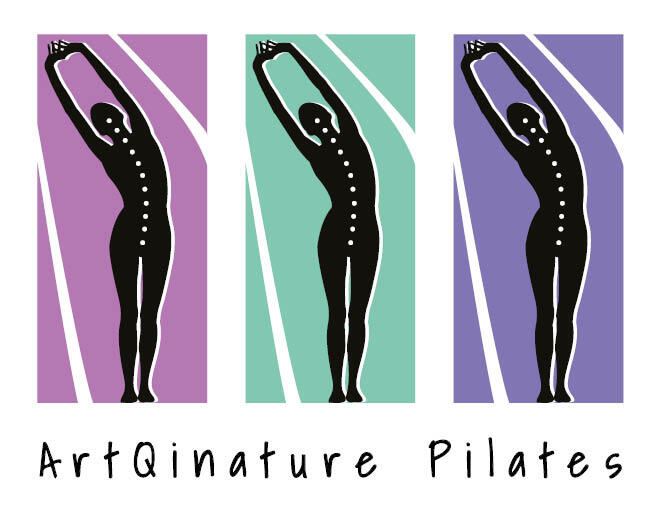
About Pilates
There are thousands of articles our there trying to define what Pilates is but yet you would not be able to clearly understand it until you experience it on your own body. We will try to give you an introduction but we encourage you to come and try it out by yourself.
"Change happens through movement and movement heals"
Joseph Pilates
Joseph Pilates suffered poor health during his childhood but his determination to overcome it took him to challenge the fitness regimes advised by his doctors. He developed his own fitness training methodology inspired by different disciplines and that's why you can find a variety of influences in Pilates such as yoga, dance, weight lifting...or even circus training..!He not only managed to successfully overcome his initial health fragility but to endure and enjoy a good physical health during his whole life until his dead at the age of 83..During that time he transmitted his method, which he named Contrology, to a different range of clients such as dancers, boxers, soldiers...and soon all sorts of public, proving that it could benefit everyone.
"Physical fitness is the first requisite of happiness"
Joseph Pilates
Our habits in our daily lives, work or hobbies, take us to overuse some muscles, therefore underusing others and as a result developing bad postures and movement routines. With Pilates we aim to mobilise all joints in all possible directions, making it the best antidote for a sedentary life and the perfect complement to any other exercise you practice.Pilates has proven to increase strength, flexibility, stamina and concentration, so whatever your motivation is to start to practice it, you will gain all that as a bonus.
"My method develops the body uniformly, corrects wrong posture, restore physical vitality, invigorates the mind and elevates the spirit"
Joseph Pilates
To obtain all the benefits of Pilates we need to focus our full attention on our own bodies. The success of the exercises relies on their mindful performance, Concentration will give you Control and Precision of movement. These are three of the main principles of Pilates along with Breathing, Centring and Flow. The successful combination of these ingredients will help you to obtain the desired movement and omit any undesired movement.
"Pilates is complete coordination of body, mind and spirit"
Joseph Pilates
Through the Pilates sessions you will train your mind to recruit the right muscles and develop strength in your core. The mastering of core stability we will allow you to improve your posture and to move arms and legs freely without risk of injury as well as maintaining a healthy spine. And as Joseph Pilates state, no matter your age, as long as your spine is flexible you are young!






